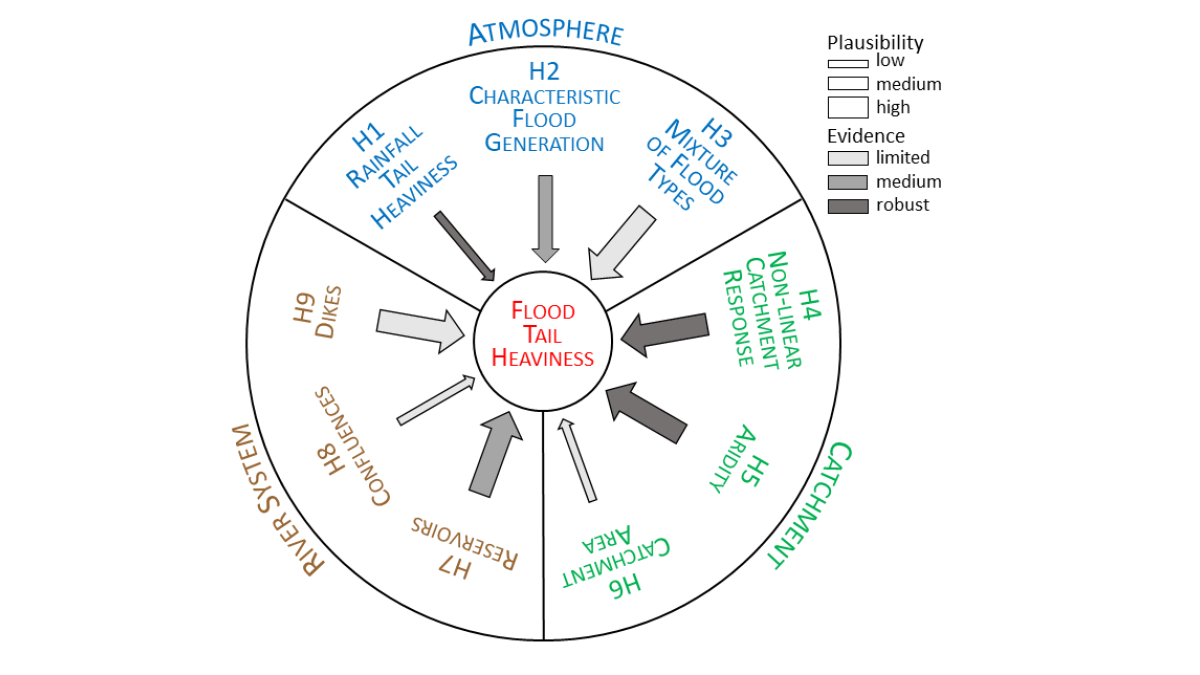Editors’ Highlights are summaries of recent papers by AGU’s journal editors.
Source: Water Resources Research
There are theoretical reasons why extreme floods become exponentially less likely the bigger they get. Much statistical hydrology depends on this assumption, but examining long records of river flows demonstrates that nature does not always conform to this assumption – the statistical distribution of the extremes may be ‘heavy tailed’ rather than exponential. If hydrologists fail to spot this, the consequences of their assumptions being wrong can be devastating, with much bigger floods occurring much more frequently than they supposed.
Merz et al. [2022] present nine hypotheses for why the statistical distribution of flows may be ‘heavy-tailed’. The authors find that this may be due to characteristics of rainfall, runoff in catchments, or the operation of reservoirs. By recognizing these factors, hydrologists will be better able to predict when ‘heavy-tailed’ behavior could occur.
Citation: Merz, B., Basso, S., Fischer, S., Lun, D., Blöschl, G., Merz, R., et al. (2022). Understanding heavy tails of flood peak distributions. Water Resources Research, 58, e2021WR030506. https://doi.org/10.1029/2021WR030506
—Jim Hall, Editor, Water Resources Research

